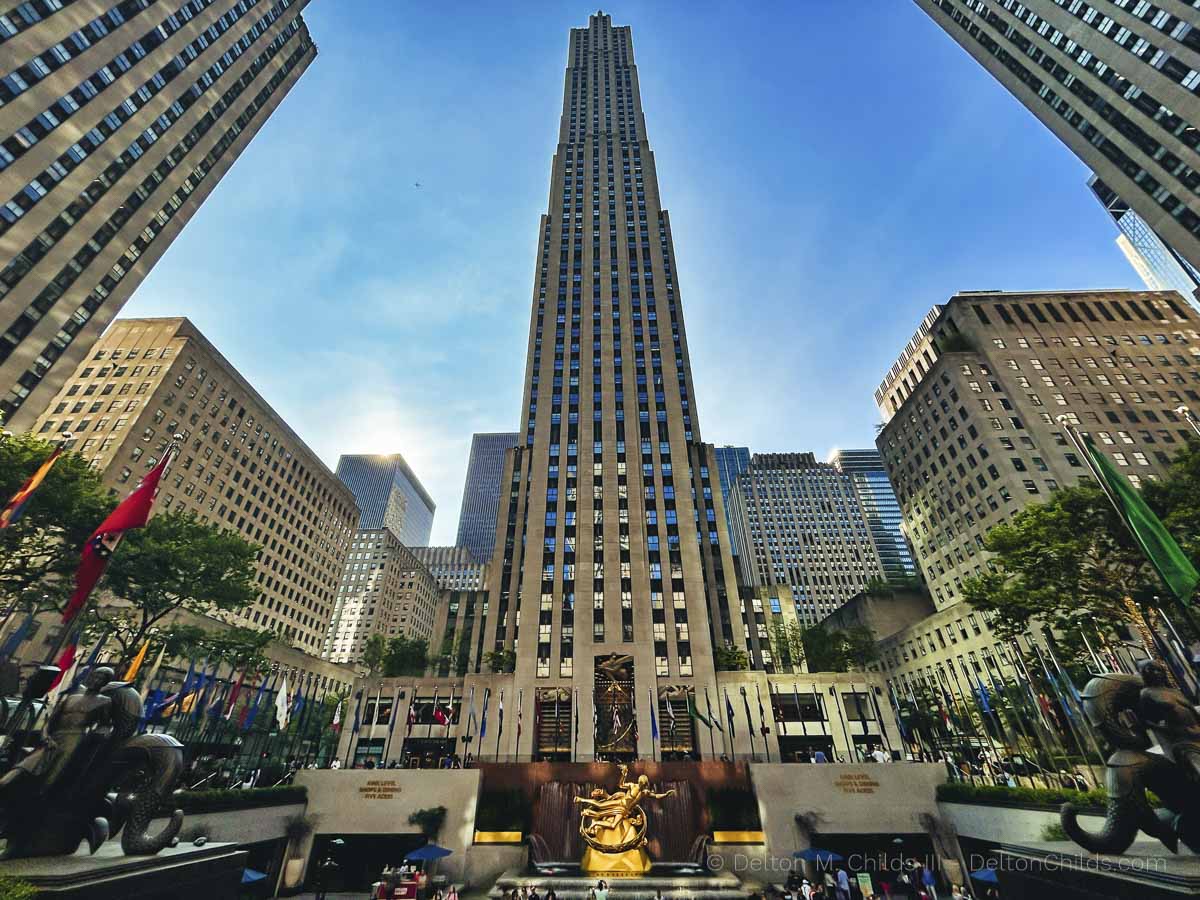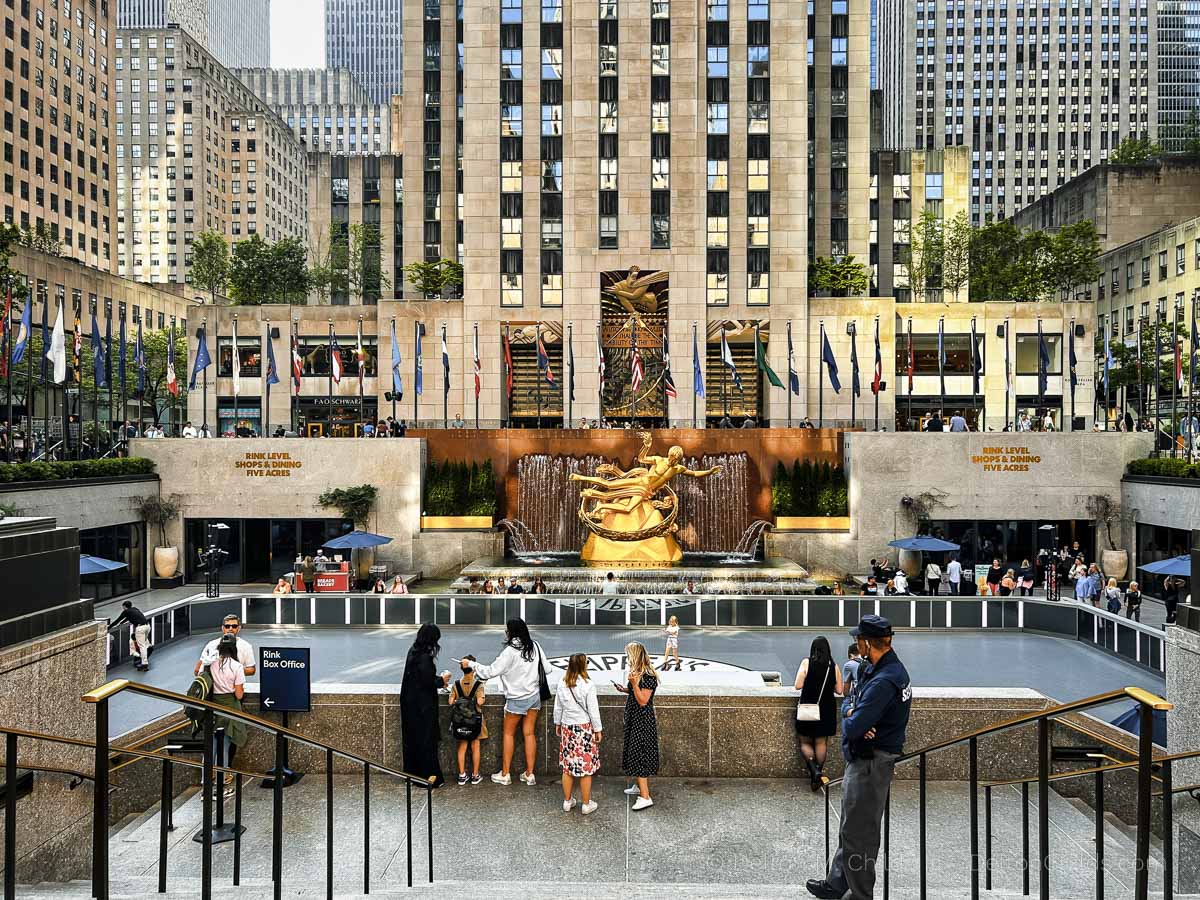Exploring the Timeless Beauty of Rockefeller Center

There are few places in New York City that hold as much historical and architectural significance as Rockefeller Center. I didn’t get to spend much time there, just passing through on my way to Chinatown from the Museum of Modern Art but I couldn’t pass up the opportunity to photograph the legendary Rockefeller Center. Nestled in the heart of Manhattan, this iconic complex has been a focal point of the city’s cultural, social, and economic life since it first opened its doors in the 1930s. Whether you are a New York native or a first-time visitor, there is something magical about Rockefeller Center that never fails to capture the imagination. In this article, we will delve into the rich history and artistic heritage of this beloved landmark, exploring when was Rockefeller Center built, why is Rockefeller Center famous, and the stories behind its statues.
A Brief Historical Timeline
The story of Rockefeller Center begins in the late 1920s when John D. Rockefeller Jr. envisioned a grand complex of buildings that would serve as a commercial and cultural hub in the city. His idea was to create a “city within a city” that would embody the spirit of progress and innovation. The project officially commenced in 1931, with the first buildings completed in 1933. The construction of the entire complex took nearly a decade, with the final buildings opening their doors in 1939.
The development of Rockefeller Center was a massive undertaking, involving thousands of workers and architects from around the world. It was the largest private building project in American history at the time, and its completion marked a significant milestone in the evolution of modern urban design. Today, the complex consists of 19 buildings spread across 22 acres, including the iconic Radio City Music Hall, the majestic St. Patrick’s Cathedral, and the world-famous ice-skating rink.
Why is Rockefeller Center Famous: Its Cultural and Historical Significance
Rockefeller Center is famous not only for its stunning architecture and art but also for its cultural and historical significance. Throughout its history, the complex has been at the forefront of American innovation and has played host to some of the most important events and figures in American history.
One of the most notable aspects of Rockefeller Center is its role as a media hub. In the early 1930s, the complex became the headquarters for the Radio Corporation of America (RCA), which later evolved into the National Broadcasting Company (NBC). Over the years, Rockefeller Center has been home to some of the most popular television shows and news programs in the country, earning it the nickname “Radio City.”
Another reason why Rockefeller Center is famous is its association with some of the most prominent figures in American history. The complex has been visited by numerous U.S. Presidents, celebrities, and foreign dignitaries, and it has served as the backdrop for countless films, television shows, and other media productions.
The Architecture: An Art Deco Masterpiece
The architecture of Rockefeller Center is a testament to the creative and technical prowess of its designers. The complex is renowned for its Art Deco style, which emerged in the 1920s and 1930s as a reaction to the austerity of the First World War. This style is characterized by its use of bold geometric shapes, rich colors, and luxurious materials, all of which are evident in the design of Rockefeller Center.
The centerpiece of the complex is the iconic 30 Rockefeller Plaza, also known as the Comcast Building. Standing at 850 feet tall, this skyscraper is an impressive example of Art Deco architecture and serves as the headquarters for NBC. The building’s facade is adorned with intricate carvings and sculptures, including the famous Atlas statue, which has become a symbol of the complex.
Another noteworthy building within Rockefeller Center is Radio City Music Hall, which is considered one of the finest examples of Art Deco design in the world. The interior of the music hall is a visual feast, featuring opulent chandeliers, sweeping staircases, and an enormous stage that has played host to some of the greatest performers in history.
The Art and Sculptures of Rockefeller Center
In addition to its architectural prowess, Rockefeller Center is home to an impressive collection of art and sculptures. The complex is adorned with murals, mosaics, and statues that celebrate the themes of progress, innovation, and human achievement.
One of the most famous artworks at Rockefeller Center is the Prometheus statue, which stands at the heart of the complex. Created by sculptor Paul Manship in 1934, this gilded bronze statue depicts the mythological figure who stole fire from the gods and gave it to humanity. The statue is surrounded by a granite pool, which serves as the backdrop for the iconic ice-skating rink during the winter months.
Another notable artwork at Rockefeller Center is the “Intelligence Awakening Mankind” mural by Barry Faulkner, which can be found inside the lobby of 30 Rockefeller Plaza. This massive mural is composed of thousands of gold leaf squares and depicts a group of figures representing the various branches of human knowledge and achievement.

The Stories Behind Rockefeller Center’s Statues
The statues of Rockefeller Center are more than just decorative elements; they tell the story of human progress and the ideals that inspired the complex’s construction. One of the most famous statues is Atlas, which was created by sculptor Lee Lawrie in 1937. This massive bronze statue depicts the mythological Titan bearing the weight of the world on his shoulders, symbolizing strength, endurance, and resilience.
Another prominent statue at Rockefeller Center is “Youth Leading Industry,” which was created by sculptor Robert Garrison in 1936. This statue features two figures – a young man and woman – who represent the future of American industry and innovation. The statue is a reminder of the important role that youth plays in driving the nation forward.
Finally, there is the “Man at the Crossroads” mural by Diego Rivera, which was originally commissioned for the lobby of 30 Rockefeller Plaza but was later destroyed due to its controversial content. The mural depicted a scene of human progress, with a central figure representing science and technology at the crossroads of capitalism and socialism. Although the original mural was lost, its story remains an important part of the complex’s history.
The Enduring Appeal of Rockefeller Center’s Beauty and History
Rockefeller Center is a testament to the power of human ingenuity and the creative spirit that has defined New York City for generations. From the moment its foundations were laid, this complex has been a beacon of progress, innovation, and artistic excellence.
Today, Rockefeller Center continues to inspire visitors with its timeless beauty and rich history. Whether you are marveling at the Art Deco architecture, exploring the complex’s many sculptures, or simply enjoying the bustling energy of this “city within a city,” there is no denying the enduring appeal of Rockefeller Center.
As you walk the halls of this magnificent complex, take a moment to appreciate the stories that have unfolded within its walls – stories of determination, perseverance, and the relentless pursuit of greatness. These are the stories that have shaped not only Rockefeller Center but also the city that it calls home.

